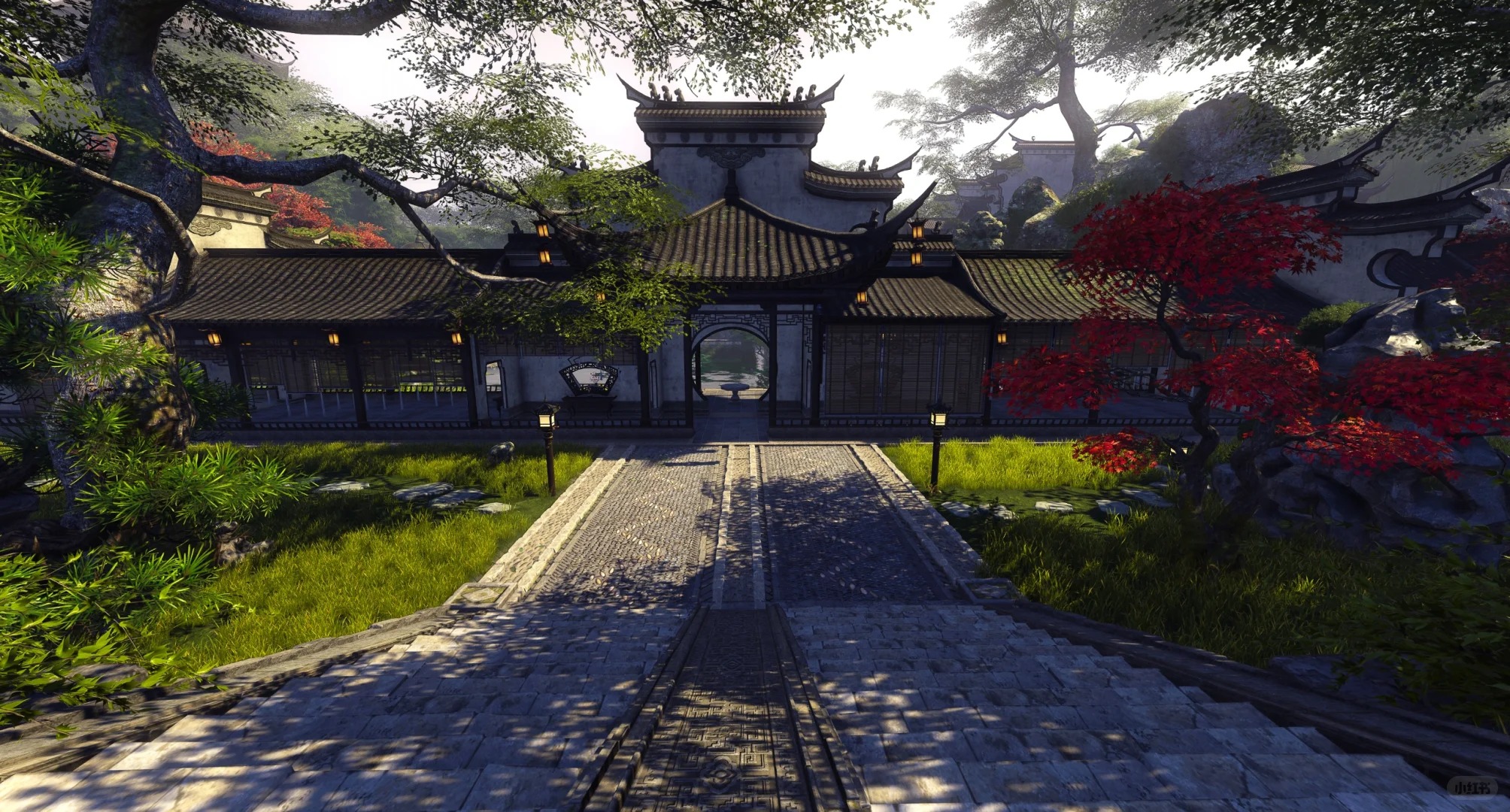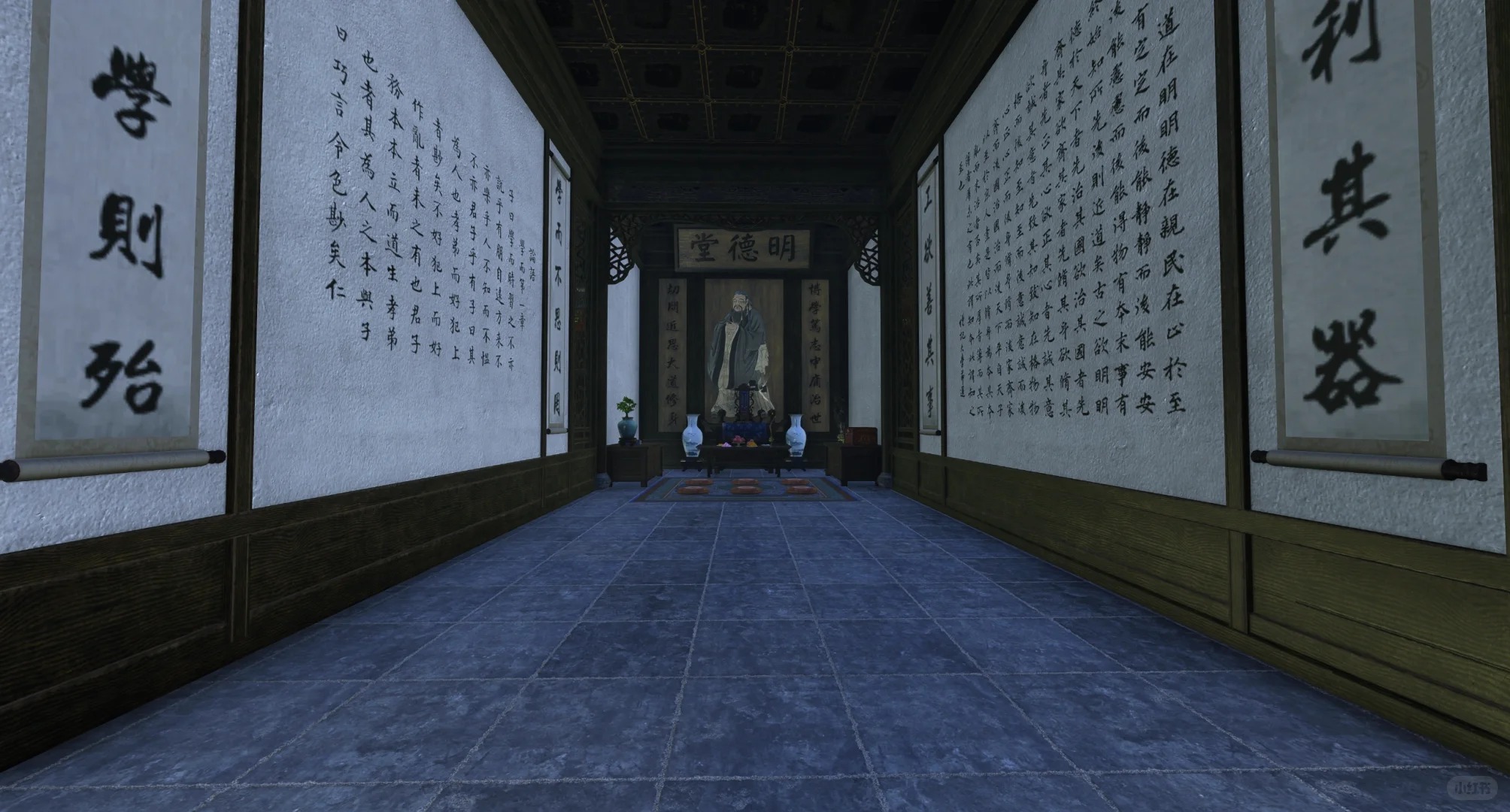White Deer Grotto Academy
Historical Overview
Established in 785 CE, the academy was named after Li Bo’s white deer, which he claimed guided him to the site. Initially a humble retreat, it gained prominence in the Song Dynasty (960–1279) when Zhu Xi, a pivotal Neo-Confucian philosopher, served as its headmaster. His teachings transformed it into a global hub for Confucian studies, influencing scholars across East Asia. Over centuries, the academy endured periods of decline and revival, including destruction during wars and restoration under Ming and Qing emperors. In 1988, it was designated a national key cultural relic protection site, ensuring its preservation for future generations.
Architectural Layout
The academy’s design harmonizes with its natural surroundings, featuring a series of courtyards, pavilions, and halls arranged along a central axis:
- Front Gate (Lijing Gate): A grand entrance flanked by stone lions, symbolizing scholarly pursuit.
- Lecture Hall (Minglun Hall): The main teaching space, where Zhu Xi delivered lectures on Confucian classics.
- Pilgrim’s Path: A stone-paved trail lined with inscriptions by ancient scholars, leading to the sacred Pilgrim’s Pavilion.
- Bamboo Grove: A tranquil area for meditation, inspired by Li Bo’s love for nature.
- Library (Yishu Building): Houses rare manuscripts and stone tablets inscribed with Confucian texts.
- Back Garden: Features a pond, pavilions, and the iconic White Deer Monument, commemorating the academy’s founding myth.
Major Attractions
- Minglun Hall: The heart of the academy, where Zhu Xi and other masters lectured. Its wooden beams and carved dragons reflect Song Dynasty craftsmanship.
- Pilgrim’s Pavilion: A hexagonal pavilion atop Wulao Peak, offering panoramic views of the academy and Lushan Mountains.
- Stone Inscriptions: Over 500 tablets bearing calligraphy by Tang and Song scholars, including Yan Zhenqing and Huang Tingjian.
- Bamboo Garden: A serene space for reflection, with paths winding through towering bamboo stalks.
- Zhu Xi Memorial Hall: Dedicated to the philosopher’s life and work, featuring portraits, manuscripts, and interactive exhibits.
- Lijing Bridge: A stone arch bridge spanning a lotus pond, symbolizing the crossing from ignorance to knowledge.
Suggested Itineraries
1. Classic Route (1–2 hours):
Lijing Gate → Minglun Hall → Pilgrim’s Path → Pilgrim’s Pavilion → Bamboo Grove → Back Garden
Highlights: Core academic buildings and natural scenery.
2. Cultural Immersion (3–4 hours):
Lijing Gate → Minglun Hall → Stone Inscriptions Gallery → Zhu Xi Memorial Hall → Yishu Building → Pilgrim’s Pavilion → Bamboo Grove → Back Garden
Highlights: In-depth exploration of Confucian heritage and calligraphy art.
3. Full-Day Exploration (5–6 hours):
Lijing Gate → Minglun Hall → Stone Inscriptions Gallery → Zhu Xi Memorial Hall → Yishu Building → Pilgrim’s Pavilion → Bamboo Grove → Back Garden → Lushan Hiking Trail (optional)
Highlights: Comprehensive experience combining history, nature, and hiking.
Ticket Purchase
- Online: Book via the official White Deer Grotto Academy website or WeChat mini-program (up to 7 days in advance).
- On-Site: Tickets available at the entrance, but queues may be long during peak seasons.
- Prices:
- Peak Season (April–October): ¥40 (adults), ¥20 (students/seniors).
- Off-Season (November–March): ¥30 (adults), ¥15 (students/seniors).
- Free: Children under 1.2m, disabled visitors, and military personnel.
Transportation
- By Bus: Take Route 5 or 16 from Jiujiang city center to the academy stop.
- By Taxi: Direct ride from Jiujiang Railway Station (20–30 minutes, ¥30–50).
- By Car: Self-drive via the G70 Foshan-Yichang Expressway; parking available on-site.
- Departure: Exit via the north gate to explore nearby Lushan Mountains or Donglin Temple.
Best Time & Tips
- Peak Hours: Avoid 10 AM–2 PM; visit early (8:30 AM opening) or late (after 3 PM).
- Crowds: Weekends and holidays are busiest; weekdays offer a quieter experience.
- Weather: spring (April–May) and autumn (September–October) are ideal for hiking and sightseeing.
- Essentials:
- Wear comfortable shoes (the site involves walking on uneven stone paths).
- Bring sunscreen and a hat for summer visits.
- Photography allowed (no flash in indoor galleries).
- Prohibited items: Large bags, drones, and selfie sticks.
- Guided tours available in English, Mandarin, and Japanese (¥100–200 per group).
Contact Us
What Our Clients Say?
Based on 10,000+ traveler reviews
















